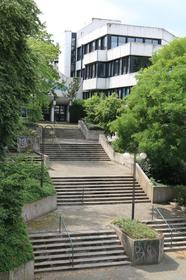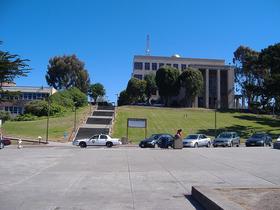School Highlights
International Academy of Design and Technology-Sacramento serves 60 students (90% of students are full-time).
The college's student-teacher ratio of 12:1 is lower than the state community college average of 32:1.
Minority enrollment is 83% of the student body (majority Hispanic and Asian), which is more than the state average of 77%.
Quick Facts (2025-26)
- Enrollment: 60 students
- Student-teacher ratio: 12:1
- Minority enrollment: 83%
- Source: Integrated Postsecondary Education Data System (IPEDS)
School Overview
The teacher population of 5 teachers has stayed relatively flat over five years.
International Academy of Design and Technology-Sacramento
(CA) Community College Avg.
Carnegie Classification
Item not available
Baccalaureate/Associate's Colleges: Associate's Dominant
Institution Level
Four or more years
At least 2 but less than 4 years
Institution Control
Private, for profit
Public
Total Faculty
5 staff
315 staff
Student Body
The student population of International Academy of Design and Technology-Sacramento has stayed relatively flat over five years.
The student-teacher ratio of 12:1 has stayed the same over five years.
The International Academy of Design and Technology-Sacramento diversity score of 0.72 is more than the state average of 0.70. The school's diversity has stayed relatively flat over five years.
Total Enrollment
60 students
9,796 students
Student-Teacher Ratio
12:1
32:1
# Full-Time Students
54 students
1,259 students
# Part-Time Students
6 students
8,537 students
# Enrollment Undergraduate
150 students
242 students
# Full-Time Undergraduate Students
54 students
1,250 students
# Full-Time Graduate Students
n/a
63 students
# Part-Time Undergraduate Students
6 students
8,299 students
# Part-Time Graduate Students
n/a
10 students
Total Dormitory Capacity
n/a
121 students
% American Indian/Alaskan
n/a
n/a
% Asian
11%
13%
% Hispanic
16%
47%
% Black
7%
7%
% White
17%
23%
% Hawaiian
n/a
1%
% Two or more races
3%
5%
% Non Resident races
n/a
1%
% Unknown races
46%
3%
Diversity Score
0.72
0.70
College Completion Rate (Students who graduate in less than 4 years)
n/a
42%
College Completion Rate (Students who graduate in 4 years or more than 4 years)
n/a
43%
Average Graduate Earnings (10 Years)
$30,800
$34,700
Tuition and Acceptance Rate
% Students Receiving Some Financial Aid
92%
85%
Median Debt for Graduates
$27,230
$9,500
Median Debt for Dropouts
$8,845
$5,500
Acceptance Rate
n/a
93%
Source: 2023 (or latest year available) Integrated Postsecondary Education Data System (IPEDS)
Frequently Asked Questions
In what neighborhood is International Academy of Design and Technology-Sacramento located?
International Academy of Design and Technology-Sacramento is located in the North Sacramento neighborhood of Sacramento, CA.
Recent Articles

Community Colleges: A to Z – 2025 Guide
Explore the A–Z of community colleges in 2025: programs, affordability, pathways, and innovations for educators and parents.

Community College vs. Dual Enrollment 2025
Compare community college and dual enrollment in 2025. A parent’s guide to affordability, transfer credits, and student success pathways.

Will My Child’s Credits Transfer? Parent’s 2025 Guide
Learn how to ensure your child’s credits transfer in 2025. A parent’s guide to transfer policies, pitfalls, and planning for success.





